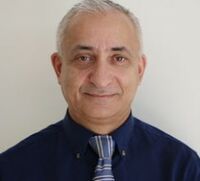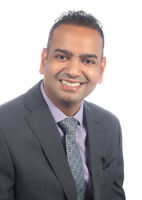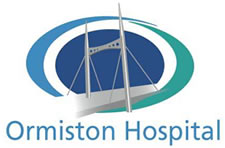Central Auckland, East Auckland, South Auckland > Private Hospitals & Specialists >
Ormiston Hospital Endoscopy
Private Surgical Service, Endoscopy (Gastroenterology), General Surgery, Gastroenterology & Hepatology (Liver)
Description
Make a patient endoscopy referral via our website.
Ormiston Hospital offers the leading Endoscopy service in the region. We have a team of dedicated endoscopists who are available to see patients regularly. This team is highly experienced and thorough in what they do as medical experts.
Ormiston Hospital is equipped with the latest and most modern equipment that allows the use of different instruments to enable extremely accurate removal of samples or growths. With this technique, the doctor can diagnose either by seeing directly what is causing the problem or by taking a small tissue sample for examination under a microscope.
Consultants
-

Dr Paul Casey
Gastroenterologist
-

Dr Stephen Gerred
Gastroenterologist
-

Dr Dinesh Lal
Gastroenterologist
-

Dr Ravinder Ogra
Gastroenterologist
-

Dr Stephen Persson
Gastroenterologist
-

Dr Amin Roberts
Paediatric Gastroenterologist
-

Dr Anurag Sekra
Gastroenterologist
-

Dr Parry (Primal) Singh
Colorectal Surgeon
Procedures / Treatments
Endoscopy is the process of looking inside body cavities, using very a tiny camera attached to the end of a long, flexible tube (endoscope). Images from the camera are sent to a television monitor so that the doctor can direct the movement of the endoscope. It is also possible to pass different instruments through the endoscope to allow small samples or growths to be removed. Endoscopy allows a doctor to make a diagnosis either by seeing directly what is causing the problem or by taking a small tissue sample for examination under a microscope (biopsy). Endoscopy can also be used as a treatment e.g. for removal of swallowed objects in the oesophagus (food pipe), healing of lesions etc.
Endoscopy is the process of looking inside body cavities, using very a tiny camera attached to the end of a long, flexible tube (endoscope). Images from the camera are sent to a television monitor so that the doctor can direct the movement of the endoscope. It is also possible to pass different instruments through the endoscope to allow small samples or growths to be removed. Endoscopy allows a doctor to make a diagnosis either by seeing directly what is causing the problem or by taking a small tissue sample for examination under a microscope (biopsy). Endoscopy can also be used as a treatment e.g. for removal of swallowed objects in the oesophagus (food pipe), healing of lesions etc.
Endoscopy is the process of looking inside body cavities, using very a tiny camera attached to the end of a long, flexible tube (endoscope). Images from the camera are sent to a television monitor so that the doctor can direct the movement of the endoscope. It is also possible to pass different instruments through the endoscope to allow small samples or growths to be removed.
Endoscopy allows a doctor to make a diagnosis either by seeing directly what is causing the problem or by taking a small tissue sample for examination under a microscope (biopsy).
Endoscopy can also be used as a treatment e.g. for removal of swallowed objects in the oesophagus (food pipe), healing of lesions etc.
Colonoscopy is the examination of your colon (large bowel) using a colonoscope (long, flexible tube with a camera on the end). The colonoscope is passed into your rectum (bottom) and then moved slowly along the entire colon, while images from the camera are displayed on a television monitor. The procedure takes from 10 minutes to an hour. Sometimes a small tissue sample (biopsy) will need to be taken during the procedure for later examination at a laboratory. A colonoscopy may help diagnose conditions such as polyps (small growths of tissue projecting into the bowel), tumours, ulcerative colitis (inflammation of the colon) and diverticulitis (inflammation of sacs that form on the walls of the colon). Colonoscopy may also be used to remove polyps in the colon. Risks of a colonoscopy are rare but include: bleeding if a biopsy is performed; allergic reaction to the sedative; perforation (tearing) of the bowel wall. What to expect It is important that the bowel is completely empty before the procedure takes place. This means that you will only be able to have liquids on the day before, and will probably have to take some oral laxative medication (to make you go to the toilet more). When you are ready for the procedure, you will be given medication (a sedative) to make you go into a light sleep. This will be given by an injection into a vein in your arm or hand. The colonoscopy will usually take 15 – 30 minutes, but you will probably sleep for another 30 minutes. Because you have been sedated (given medication to make you sleep) it is important that you arrange for someone else to drive you home. Some patients may experience discomfort after the procedure, due to air remaining in the colon.
Colonoscopy is the examination of your colon (large bowel) using a colonoscope (long, flexible tube with a camera on the end). The colonoscope is passed into your rectum (bottom) and then moved slowly along the entire colon, while images from the camera are displayed on a television monitor. The procedure takes from 10 minutes to an hour. Sometimes a small tissue sample (biopsy) will need to be taken during the procedure for later examination at a laboratory. A colonoscopy may help diagnose conditions such as polyps (small growths of tissue projecting into the bowel), tumours, ulcerative colitis (inflammation of the colon) and diverticulitis (inflammation of sacs that form on the walls of the colon). Colonoscopy may also be used to remove polyps in the colon. Risks of a colonoscopy are rare but include: bleeding if a biopsy is performed; allergic reaction to the sedative; perforation (tearing) of the bowel wall. What to expect It is important that the bowel is completely empty before the procedure takes place. This means that you will only be able to have liquids on the day before, and will probably have to take some oral laxative medication (to make you go to the toilet more). When you are ready for the procedure, you will be given medication (a sedative) to make you go into a light sleep. This will be given by an injection into a vein in your arm or hand. The colonoscopy will usually take 15 – 30 minutes, but you will probably sleep for another 30 minutes. Because you have been sedated (given medication to make you sleep) it is important that you arrange for someone else to drive you home. Some patients may experience discomfort after the procedure, due to air remaining in the colon.
Colonoscopy is the examination of your colon (large bowel) using a colonoscope (long, flexible tube with a camera on the end). The colonoscope is passed into your rectum (bottom) and then moved slowly along the entire colon, while images from the camera are displayed on a television monitor. The procedure takes from 10 minutes to an hour. Sometimes a small tissue sample (biopsy) will need to be taken during the procedure for later examination at a laboratory.
A colonoscopy may help diagnose conditions such as polyps (small growths of tissue projecting into the bowel), tumours, ulcerative colitis (inflammation of the colon) and diverticulitis (inflammation of sacs that form on the walls of the colon).
Colonoscopy may also be used to remove polyps in the colon.
Risks of a colonoscopy are rare but include: bleeding if a biopsy is performed; allergic reaction to the sedative; perforation (tearing) of the bowel wall.
What to expect
It is important that the bowel is completely empty before the procedure takes place. This means that you will only be able to have liquids on the day before, and will probably have to take some oral laxative medication (to make you go to the toilet more).
When you are ready for the procedure, you will be given medication (a sedative) to make you go into a light sleep. This will be given by an injection into a vein in your arm or hand.
The colonoscopy will usually take 15 – 30 minutes, but you will probably sleep for another 30 minutes. Because you have been sedated (given medication to make you sleep) it is important that you arrange for someone else to drive you home.
Some patients may experience discomfort after the procedure, due to air remaining in the colon.
A flexible tube with a video camera (endoscope) is inserted through the mouth into the stomach and small intestine while you are under sedation. A smaller tube is then advanced through the first tube into the bile duct (the tube that connects your gallbladder to your intestines) through which dye is injected and an x-ray is taken to visualise the tubes. This procedure also allows the extraction of stones from the tubes without the need for surgery. The risks and procedure are similar to gastroscopy and colonoscopy.
A flexible tube with a video camera (endoscope) is inserted through the mouth into the stomach and small intestine while you are under sedation. A smaller tube is then advanced through the first tube into the bile duct (the tube that connects your gallbladder to your intestines) through which dye is injected and an x-ray is taken to visualise the tubes. This procedure also allows the extraction of stones from the tubes without the need for surgery. The risks and procedure are similar to gastroscopy and colonoscopy.
A flexible tube with a video camera (endoscope) is inserted through the mouth into the stomach and small intestine while you are under sedation. A smaller tube is then advanced through the first tube into the bile duct (the tube that connects your gallbladder to your intestines) through which dye is injected and an x-ray is taken to visualise the tubes. This procedure also allows the extraction of stones from the tubes without the need for surgery.
The risks and procedure are similar to gastroscopy and colonoscopy.
Gastroscopy allows examination of the upper part of your digestive tract i.e. oesophagus (food pipe), stomach and duodenum (top section of the small intestine), by passing a gastroscope (long, flexible tube with a camera on the end) through your mouth and down your digestive tract. Images from the camera are displayed on a television monitor. Sometimes a small tissue sample (biopsy) will need to be taken during the procedure for later examination at a laboratory. Gastroscopy may be used to diagnose peptic ulcers, tumours, gastritis etc. Complications from this procedure are very rare but can occur. They include: bleeding if a biopsy is performed; allergic reaction to the sedative or throat spray; perforation (tearing) of the stomach with the instrument (this is a serious but extremely rare complication). What to expect All endoscopic procedures are viewed as a surgical procedure and generally the same preparation will apply. You will not be able to eat or drink anything for 6 hours before your gastroscopy. When you are ready for the procedure, the back of your throat will be sprayed with anaesthetic. You will also be offered medication (a sedative) to make you go into a light sleep. This will be given by an injection into a vein in your arm or hand. The gastroscopy will take approximately 15 minutes, but you will probably sleep for another 30 minutes. You will spend some time in a recovery unit (probably 1-2 hours) to sleep off the sedative and to allow staff to monitor you (take blood pressure readings etc). Because you have been sedated (given medication to make you sleep) it is important that you arrange for someone else to drive you home. If biopsies are taken for examination, your GP will be sent the results within 2-3 weeks.
Gastroscopy allows examination of the upper part of your digestive tract i.e. oesophagus (food pipe), stomach and duodenum (top section of the small intestine), by passing a gastroscope (long, flexible tube with a camera on the end) through your mouth and down your digestive tract. Images from the camera are displayed on a television monitor. Sometimes a small tissue sample (biopsy) will need to be taken during the procedure for later examination at a laboratory. Gastroscopy may be used to diagnose peptic ulcers, tumours, gastritis etc. Complications from this procedure are very rare but can occur. They include: bleeding if a biopsy is performed; allergic reaction to the sedative or throat spray; perforation (tearing) of the stomach with the instrument (this is a serious but extremely rare complication). What to expect All endoscopic procedures are viewed as a surgical procedure and generally the same preparation will apply. You will not be able to eat or drink anything for 6 hours before your gastroscopy. When you are ready for the procedure, the back of your throat will be sprayed with anaesthetic. You will also be offered medication (a sedative) to make you go into a light sleep. This will be given by an injection into a vein in your arm or hand. The gastroscopy will take approximately 15 minutes, but you will probably sleep for another 30 minutes. You will spend some time in a recovery unit (probably 1-2 hours) to sleep off the sedative and to allow staff to monitor you (take blood pressure readings etc). Because you have been sedated (given medication to make you sleep) it is important that you arrange for someone else to drive you home. If biopsies are taken for examination, your GP will be sent the results within 2-3 weeks.
Gastroscopy allows examination of the upper part of your digestive tract i.e. oesophagus (food pipe), stomach and duodenum (top section of the small intestine), by passing a gastroscope (long, flexible tube with a camera on the end) through your mouth and down your digestive tract. Images from the camera are displayed on a television monitor. Sometimes a small tissue sample (biopsy) will need to be taken during the procedure for later examination at a laboratory.
Gastroscopy may be used to diagnose peptic ulcers, tumours, gastritis etc.
Complications from this procedure are very rare but can occur. They include: bleeding if a biopsy is performed; allergic reaction to the sedative or throat spray; perforation (tearing) of the stomach with the instrument (this is a serious but extremely rare complication).
What to expect
All endoscopic procedures are viewed as a surgical procedure and generally the same preparation will apply. You will not be able to eat or drink anything for 6 hours before your gastroscopy. When you are ready for the procedure, the back of your throat will be sprayed with anaesthetic. You will also be offered medication (a sedative) to make you go into a light sleep. This will be given by an injection into a vein in your arm or hand.
The gastroscopy will take approximately 15 minutes, but you will probably sleep for another 30 minutes. You will spend some time in a recovery unit (probably 1-2 hours) to sleep off the sedative and to allow staff to monitor you (take blood pressure readings etc). Because you have been sedated (given medication to make you sleep) it is important that you arrange for someone else to drive you home.
If biopsies are taken for examination, your GP will be sent the results within 2-3 weeks.
Pharmacy
Website
Contact Details
Ormiston Hospital, 125 Ormiston Road, Flat Bush, Auckland
South Auckland
-
Phone
(09) 250 1157
Email
Website
125 Ormiston Road
Flat Bush
Auckland 2016
Street Address
125 Ormiston Road
Flat Bush
Auckland 2016
Postal Address
PO Box 38921
Howick
Auckland 2145
Was this page helpful?
This page was last updated at 11:22AM on September 27, 2023. This information is reviewed and edited by Ormiston Hospital Endoscopy.

